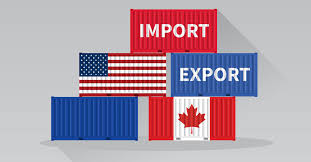Tariffs are often viewed as a negative force in international trade, increasing costs for businesses and consumers alike. However, when applied strategically, tariffs can actually have a positive impact on local economies, including the real estate market in the Greater Toronto Area (GTA). While they may initially seem unrelated, tariffs can influence property demand, development costs, and investment trends in ways that benefit the GTA’s real estate sector.
1. Encouraging Domestic Investment
When tariffs increase the cost of imported goods and materials, they make locally sourced products more competitive. In the real estate sector, this can encourage developers to prioritize domestic suppliers for construction materials such as steel, lumber, and cement. Supporting Canadian industries not only stimulates the local economy but also ensures a more stable supply chain, reducing delays in real estate development projects.
2. Increased Demand for Local Properties
Higher tariffs on foreign goods and services can lead to a shift in investment preferences. With rising costs for overseas investments, both foreign and domestic investors may find GTA real estate more attractive. This increased demand can drive property values higher, benefiting homeowners and investors in the region.
3. Protection for Local Developers
Foreign competition in the construction and development industry can sometimes drive down prices to unsustainable levels. Tariffs can act as a protective barrier, ensuring that Canadian developers remain competitive and profitable. By shielding local businesses from underpriced foreign competition, tariffs help sustain a healthy real estate ecosystem where local developers can thrive and continue to contribute to the region’s growth.
4. Enhanced Infrastructure Development
Tariff revenues generated by the government can be reinvested into public infrastructure projects, such as transit systems, roads, and utilities. Improved infrastructure attracts new residents and businesses, further boosting the real estate market. With better connectivity and accessibility, property values in key areas of the GTA can rise, making real estate investments even more lucrative.
5. A Boost to Employment and Wages
A stronger domestic manufacturing and construction sector, fueled by tariffs, leads to increased job creation and higher wages. As employment rates improve, more people can afford to purchase homes or invest in rental properties, driving demand in the real estate market. Additionally, a thriving local economy fosters consumer confidence, encouraging real estate transactions and long-term investments.
Conclusion
While tariffs can sometimes be controversial, they have the potential to benefit the GTA real estate market by promoting local investment, protecting domestic industries, and boosting economic growth. By carefully balancing trade policies, policymakers can leverage tariffs to create a more resilient and prosperous real estate sector in the GTA. Whether you’re a homeowner, investor, or developer, understanding the impact of tariffs can help you make informed decisions in the evolving market landscape.
Blog by Afifa Baig

 Facebook
Facebook
 X
X
 Pinterest
Pinterest
 Copy Link
Copy Link

